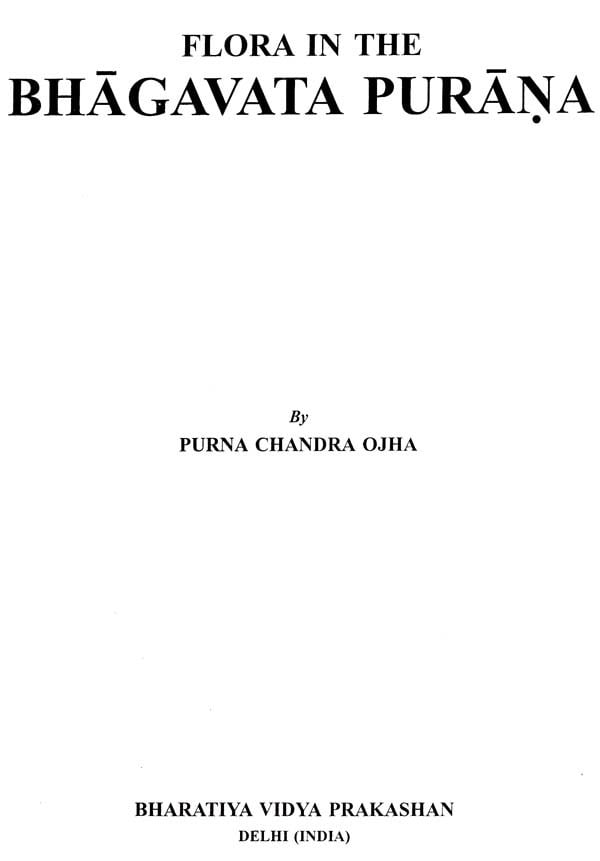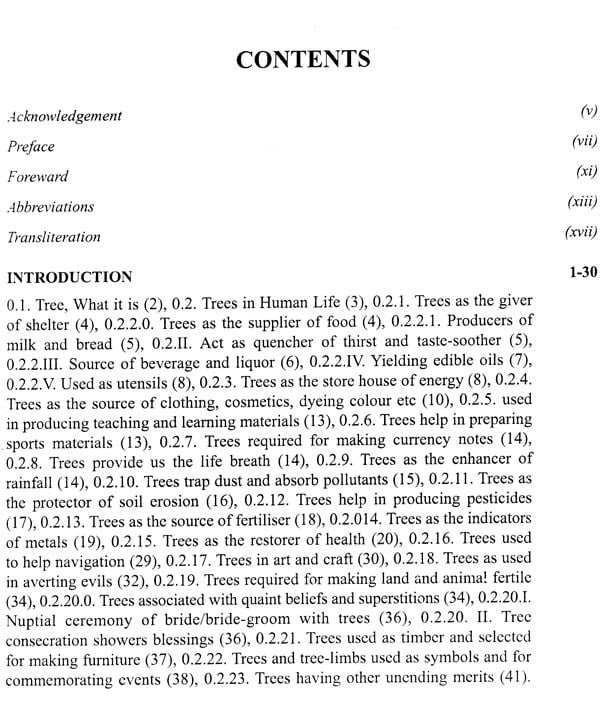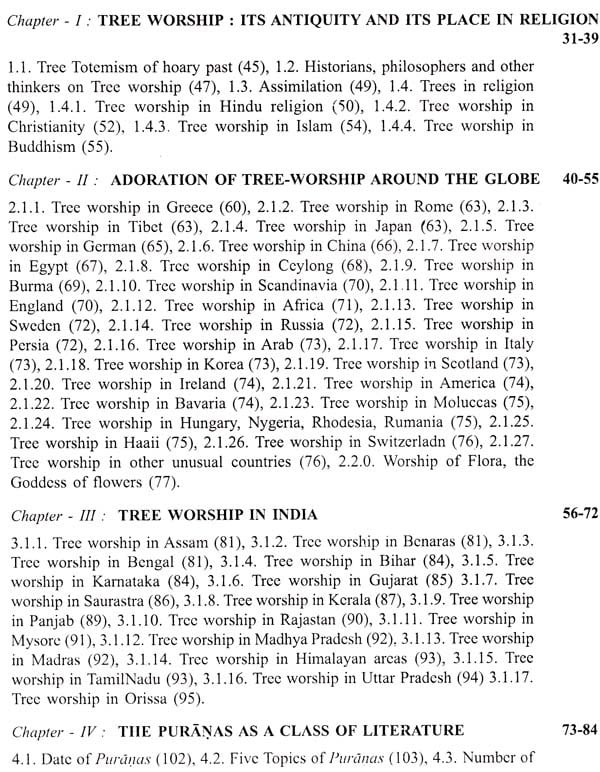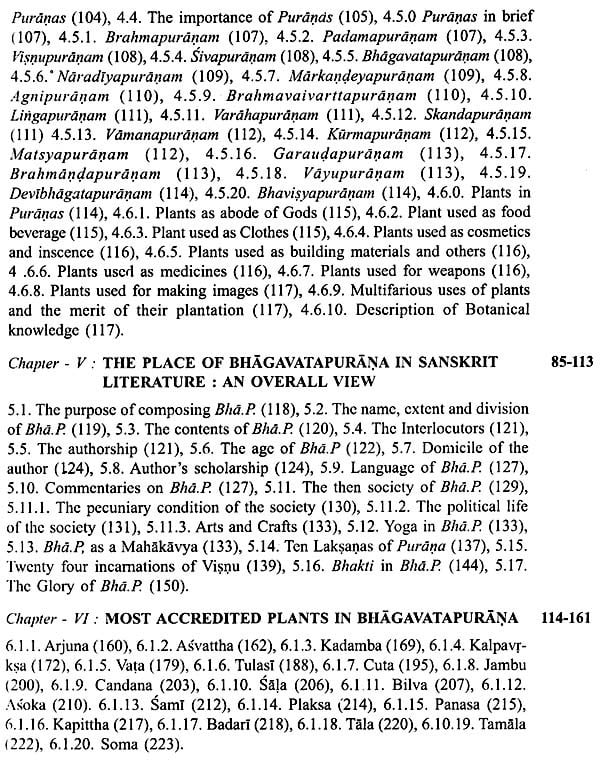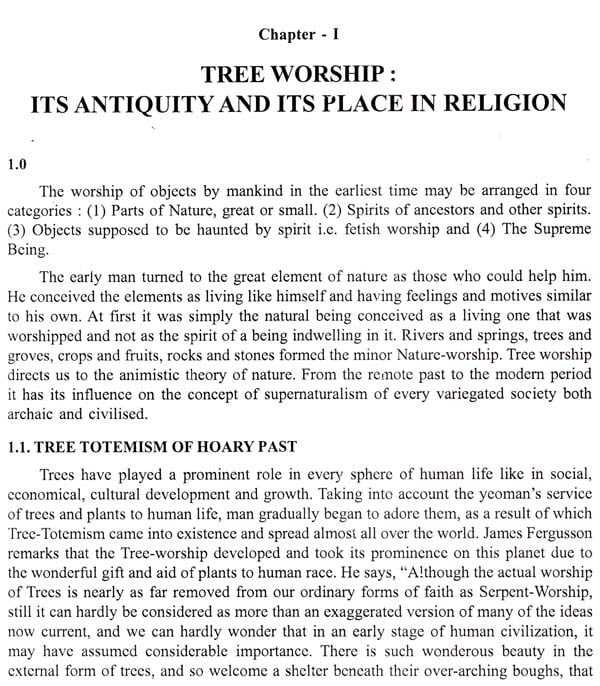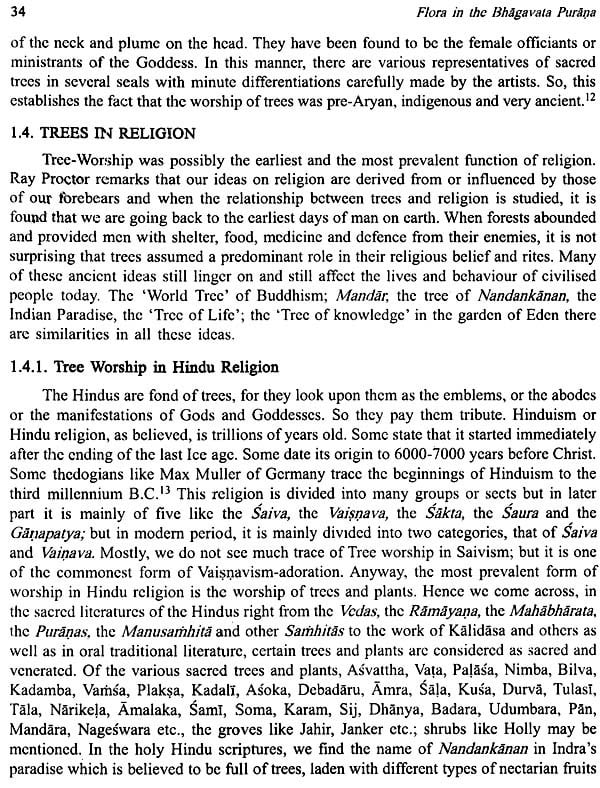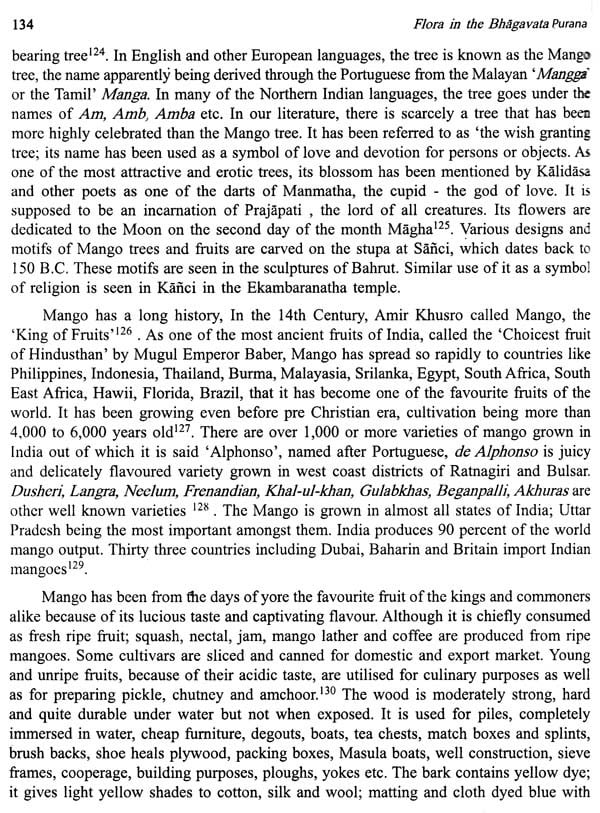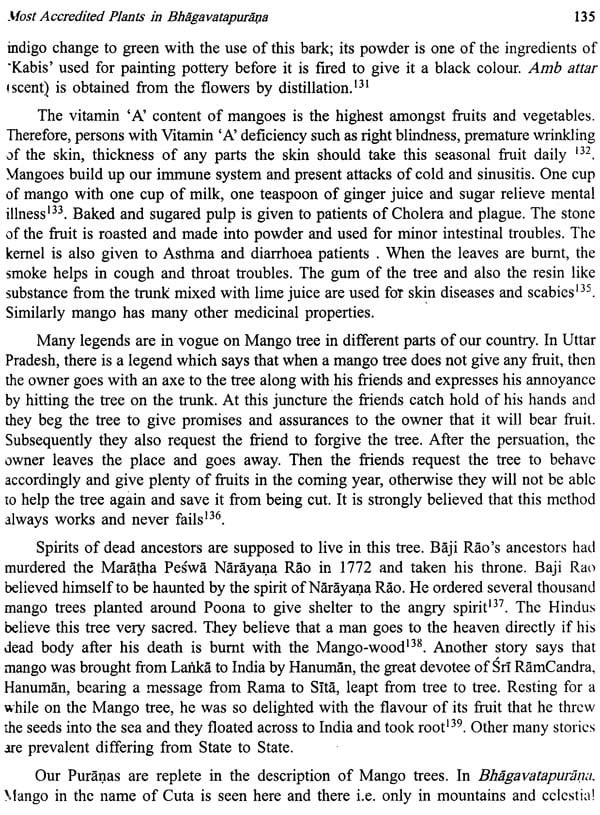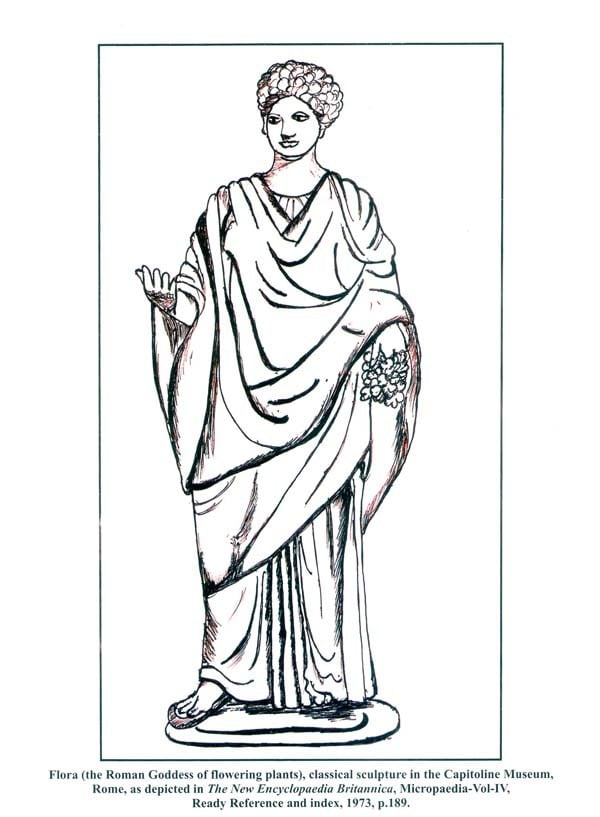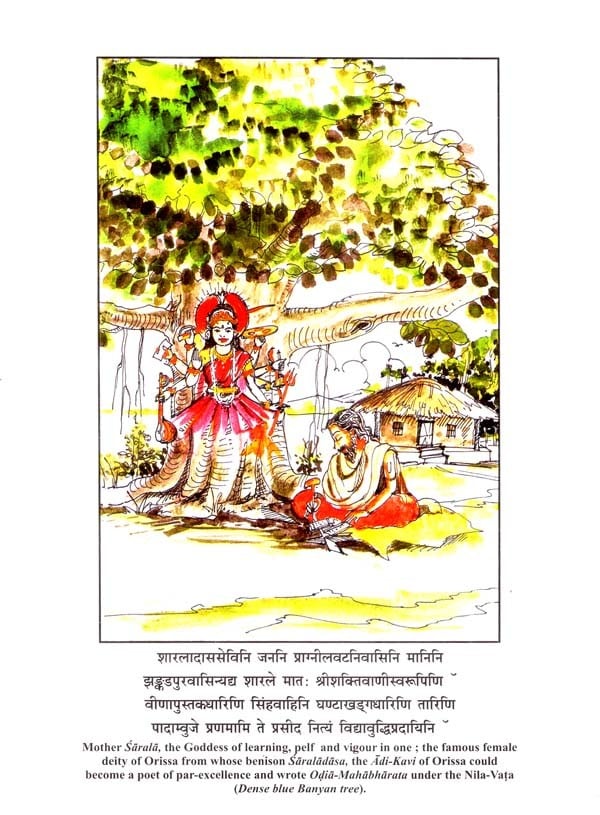
Flora in the Bhagavata Purana
Book Specification
| Item Code: | AZE439 |
| Author: | Chandra Ojha |
| Publisher: | BHARATIYA VIDYA PRAKASHAN, VARANASI |
| Language: | ENGLISH |
| Edition: | 2014 |
| ISBN: | 9788121702737 |
| Pages: | 290 (Throughout Color Illustrations) |
| Cover: | HARDCOVER |
| Other Details | 11.00x9.00 |
| Weight | 760 gm |
Book Description
Although to an outer angle, the scope of the work seems to be brief and limited only to Bhagavata Purana; efforts and pain has been taken from every angle of the plants from primitive age to modem age to limn the study perfect and full-fledged. The author has introduced nine chapters dealing with several facts of trees and plants besides the vast introduction chapter and the chapter of wise conclusion.
It may not be redundant to state the work Flora in the Bhagavata Purana will help to remove misconception of many people in India and abroad that Puranas are the meaningless narrations of cock and bull stories of an intelligent mass of ancient times having no scientific moorings behind them and establish the use of scientific observation and identify many elements around us in the form of flora to make human life more significant and worth living.
Dr. Ojha is the recipient of Kalinga Sahitya Academy Award; Rajyastariya Saraswata Mahotsava Sanmana; Jagatpur Mahotsava Sanmana; Scholars of Brilliance award; Saraswata Samaroha Samiti Sanmana; Jagannatha Mishra Memorial Prize (Sanskrit) from Ravenshaw College; Certificate of Merit from Einstein Science Club, Odisha etc. Though the work - Flora in the Bhagabata Purana seems to be limited to Bhagavata Mahapurana only, the author has thrown light on various aspects of trees and plants vividly and elaborately.
While delivering his exalted and examplary germane noble mellifluous prelection on the relationship of man with nature, Swamiji was citing the sacred verses from the esteemed Bhagavata-Mahapuranam (Bha.P) related to the sacred plants of India as well as the trees of western lands and was admonishing the mass that how nature's resources are being depleted much rather than they could be replenished.
I was moved and motivated by the holy speech of Swamiji and from that day, I made up my mind to have a work on the sacredness and yeoman's service of the plants as related in Bha.P This inquisitiveness increased day by day. Man is a slave to circumstances. Owing to certain domestic anxieties and my incessant instantaneous illness, I could not give my thought fully on it. But deo gratia, the chance came. Heeding after and heading to the unstinted valuable advice of my revered teachers, Prof. Dr. U.N. Dhal (now is no more) and Prof. Dr. Raghunath Panda (at present my honourable guide), I choose the topic for my research work as a result of which the work "Flora in the Bhagavata Purana" could see the light.
It may not be redundant to express my feelings here that before this work, though a number of scholars have taken long strides to work in various topics related to Bha.P; nobody has taken any work to be dealt with the plants as deciphered in the present endeavour. So this is the another reason for which I took this topic and hope this may be appreciated almost by all in future. To an outer angle, though the scope of the work seems to be brief and limited only to the Bha.P; efforts and pain has been taken from every angle of the plants from primitive age to modern age to limn the study perfect and full-fledged.
These works, specially the Later one has been distinguished by the title like the "fifth- veda" etc. The Puranas further laler texts have got the clues in themselves to be claimed as old as the Vedas. In the Chandogyopanisad, Narada tells Sanatkumar that he has read the Itihasas and the Puranas with other texts recognised at that time. To quote etc. (Ch.Up.VII.1.2). The Puranas particularly claim some ancient origin due to the very analysis" As such eighteen Mahapuranas came to light and proved to be the most popular religious as well as secular texts of the Indians for centuries together. A general definition of a Purana is: Later the area of these texts were further extended to the ten laksanas such as : Their popularity. grew so much that gradually the Puranas were written centering around particular deities, centres of pilgrimage and even a number of Puranas on a particular tirtha or deity. For example for Sakti-cult, we see Mahapurana and Upapuranas like Mahabharata-Purana, Devi Bhagavata, Kalika Purana, Candi Purana and so on. Of the whole of the puranic literature, the Bhdgavata Purana happens to be the crest-jewel.
Its supremacy can well be proved from the saying This popular saying indicates that the Bhagavata Mahdpurana is a testing ground of the erudition of scholars in Indian milieu of culture and philosophy.
**Contents and Sample Pages**
